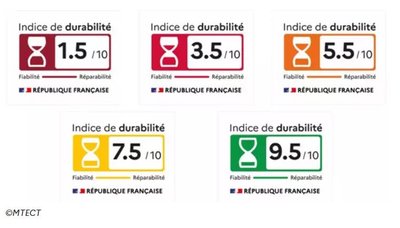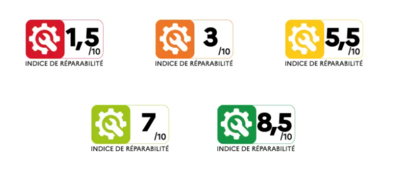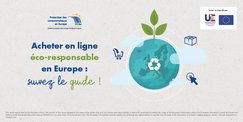What is an eco-friendly product ?
Sustainable consumption means choosing products responsibly, with the environment in mind. Eco-friendly products have a lower impact on the environment throughout their life cycle, i.e., from the raw materials used in their manufacturing, to their design, transport to the end-user, their length of use and their capacity to be recycled.
There is no set standard in Europe of what makes an eco-friendly product. But here are some criteria which can help identify products that, though sometimes more expensive, are likely to be more sustainable and will save you money in the long run.
An eco-friendly product can also be an ethical product that takes into account the working conditions in which the product has been designed and distributed, or even animal welfare.
- Natural-origins products
- Energy-efficient products
- Sustainable products
- Local products
- Ethical and fair-trade products
- Diamonds come with a price
- Ecobalyse, digital passport: tools to better understand what an eco-responsible product is?
Natural-origin products
Eco-friendly products made using natural materials and ingredients are better than those manufactured using plastics and synthetic materials, and/or chemicals and dangerous substances.
Examples: toys made entirely of wood, clothes made of linen, hemp, wool, etc
In terms of agricultural production processes, an organic product guarantees a high level of biodiversity and environmental practices that preserve natural resources and animal welfare.
Important to know !
While natural products are best, miles matter. It doesn’t make much sense to buy something that is 100% natural if the product is shipped from the other side of the world, generating significant CO2 emissions to reach its buyer. Sometimes it is better to buy a recycled product locally.
Energy-efficient products
A green product generates less CO2 emissions (the main greenhouse gas responsible for global warming) and/or less water and energy to manufacture.
Cotton, although natural, requires more water and fertiliser to process than other plant materials such as flax or hemp. However, organic cotton can be a more environmentally-friendly alternative.
A complex manufacturing process is almost always not energy efficient. Which is why some European manufacturers are moving towards ‘low-tech’ products that use less energy.
Examples: solar cooker, solar oven.
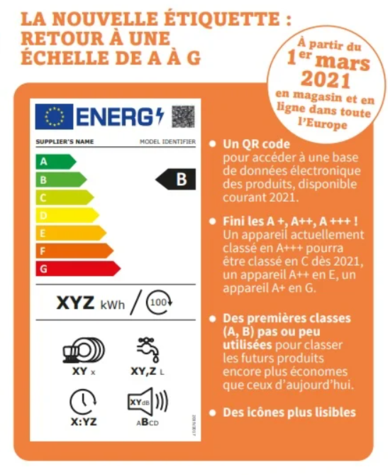
Regarding energy, make sure to check the product's energy label when buying household appliances. This label exists for all ‘energy-related products that have a significant direct or indirect impact on energy consumption during use’.
It is compulsory throughout the European Union for the following products in particular:
- dishwashers
- refrigerators
- ovens and hoods
- washing machines
- tumble dryers
- televisions
- electric lamps and light fittings
- air conditioner
- heating and hot water generators
- light bulbs and LEDs
This label provides information on the energy efficiency of the appliance, with a grade ranging from A to G. It goes with a QR code that should give you access to a product information sheet centralising all the technical characteristics of the products on sale.
The energy label allows you to compare the cost of using the product, over and above its purchase price.
Sustainable products
Sustainability is also measured in the length of time products are used before they reach the end of their life cycle and whether they can be re-used, repaired or repurposed.
Examples: rechargeable batteries, toothbrushes with replaceable heads, microfibre cloths.
Repairability is one of the most important features of a sustainable product. Single-use, short shelf-life products have created a throw-away culture that makes replacement easier and cheaper than repair. Built-in obsolescence in tech products is also a problem in our society.
If we are to make more climate-friendly products, repairability should be one of the main aims in design and manufacturing. A green product should be easy to repair, and spare parts for replacement should be easily available.
To know how durable your appliance is, look for the coloured pictogram on the product sheet. France is the first European country to impose a durability index, currently limited to washing machines and televisions. But there is also a reparability index for other household electrical and electronic products.
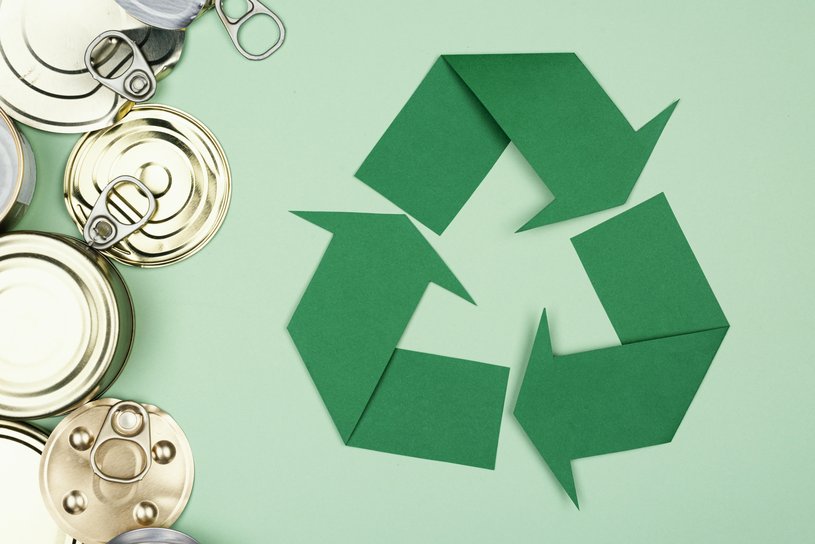
Local products
To reduce your climate footprint, it is best to buy furniture or appliances made and sold in France or Europe, or at least made from materials sourced in Europe. This is because transport is the second major factor in greenhouse gas emissions after energy and electricity use.
Product origin is not always clear. Some retailers use the French or European Union emblems on their websites but the products may come from further afar. Check the real origin of the products before clicking to buy or walk away if the information is unclear. Many traders also use dropshippingfrom countries outside the European Union, often far away, which also generates more CO² emissions.
Ethical and fair-trade products
Fair-trade
A fair-trade product is produced in a significantly shorter time and within a more transparent supply and trade chain, all of which allows small source producers to make a decent living from their work.
Fair trade is not only about food, such as coffee and chocolate, but also about textiles, furniture, jewellery and decorative items for example.
Fair trade is not defined at EU level.
In France, the law stipulates that fair trade must meet certain criteria, including payment by the buyer of a price based on production costs and balanced negotiation, part of which is earmarked for community projects.
- Payment by the buyer of a remunerative price for the workers, based on production costs and balanced negotiation;
- Payment by the buyer of an additional amount earmarked for collective projects, with the aim of strengthening the capacities and empowerment of the workers and their organisation;
- A commitment between the fair trade organisations and the producers over a period that limits the impact of the economic hazards suffered by the workers, which may not be less than 3 years.
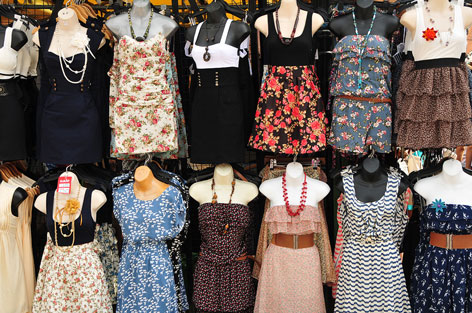
Ethical
An ethical product on the other hand takes into account the working conditions in which the product was designed and distributed.
Without knowing it, you have probably already bought products from supply chains that take advantage of forced labour, or extremely unfavourable working conditions (low pay, exploitation of minors, high health and safety risks, non-existent social protection, etc.).
According to the International Labour Organisation (ILO), forced labour means any work or service done under the menace of any penalty and which the worker does not perform of his own free will. Forced labour currently affects 27 million people worldwide, including 15 million in South-East Asia. More than 3 million children are allegedly victims of forced labour.
This is a major problem in a number of consumer industries:
- Some major supply chains for clothing brands are unfortunately contributing to this unfortunate phenomenon.
- The electronics industry is also affected, with smartphones, tablets and computers. The materials such as cobalt and lithium are mined in terrible conditions around the world.
- Other minerals such as gold and diamonds, which are used in jewellery, are mined in similar conditions.
This is why a European regulationbanning the sale, import and export of goods produced using forced labour is due to come into force by 2027.
It will enable the competent authorities and Member States of the EU, as well as the European Commission, to investigate suspect products, supply chains and manufacturers.
Any manufacturer of products banned as a result of this type of investigation will have to withdraw their products from the European market and donate, recycle or destroy them.
In the meantime, always ask yourself the following question when making purchases:
“Could this product come from an industry where forced labour is used?”
Find out where the product comes from and how it is manufactured and distributed.
Don't hesitate to do some research online and write to the seller concerned to find out more.
Beware of less-than-serious websites offering products at record prices. This could be a scam, or at the very least the sale of counterfeit products manufactured by illegal labour networks. To avoid falling into this trap, don't hesitate to read our article on how to check the reliability of an online seller!
Diamonds often come with a price
The jewellery sector, and the diamond sector in particular, is particularly affected by the phenomenon of forced labour. The extraction of diamonds in several regions of the world gives rise to serious human rights violations. Many armed groups finance their war efforts and buy weapons with the sale of diamonds by exploiting and torturing workers.
If you are planning to buy a diamond online or in a physical shop, find out as much as you can about its origin, the conditions under which it is mined and how it is transported.
A number of organisations and processes not only certify the origin, traceability and quality of diamonds, but also ensure that they do not finance armed conflicts.
For example, a European regulation implements a certification system specific to the Kimberley Process. It is an international certification scheme for rough diamonds that brings together representatives of the State and the diamond industry.
Ask the jeweller before you buy. A certified stone must have an official certificate attesting to the origin of the diamond and that it does not come from conflict zones. The certificate must also contain detailed information (diamond reference number, carat weight, characteristics, etc.).
Ecobalyse, digital passport: tools to better understand what an eco-responsible product is?
In France, the so-called ‘climate and resilience’ law provides for the introduction of a system called ‘Ecobalyse’, which is due to be rolled out by 2025.
This is an index that affixed to clothing sold in shops and online, with the aim of raising consumer awareness of excessive purchases or products of very poor quality.
An official calculator that analyses the life cycle of a garment give the basis for this index possible and takes into account the following criteria:
- Choice of raw materials
- Processing
- Packaging
- Transport
- Distribution
- Use of products
- End of life
Professionals will have to use this calculator, like a questionnaire, by filling in the data corresponding to each stage of the product's life cycle, enabling them to obtain an Ecobalyse impact score. The product will then display this score.
In the same way as household appliances, clothing will also have its own score, based on the environmental and social impact of each item of clothing.
For the time being, this system is still in the test phase in several major retailers. The French government hopes to make the index compulsory in 2025.
On the European level, the EU will introduce a digital product passport following the adoption in May 2024 of a regulation on eco-design.
This passport, available from 2027, will initially target electronic and textile products. A digital passport will be associated with each product, providing consumers with information on its environmental sustainability thanks to a QR code.
The passport will include composition, origin of materials, repair options, end-of-life treatment and environmental performance of the product. This tool should also help you make more sustainable choices when shopping online!
Funded by the European Union. Views and opinions expressed are however those of the author(s) only and do not necessarily reflect those of the European Union or the European Innovation Council and Small and Medium-sized Enterprises Executive Agency (EISMEA). Neither the European Union nor the granting authority can be held responsible for them.
Sustainable Online Shopping in Europe : Follow the guide !
Find all our tips for buying eco-responsibly online in Europe in our guide.


